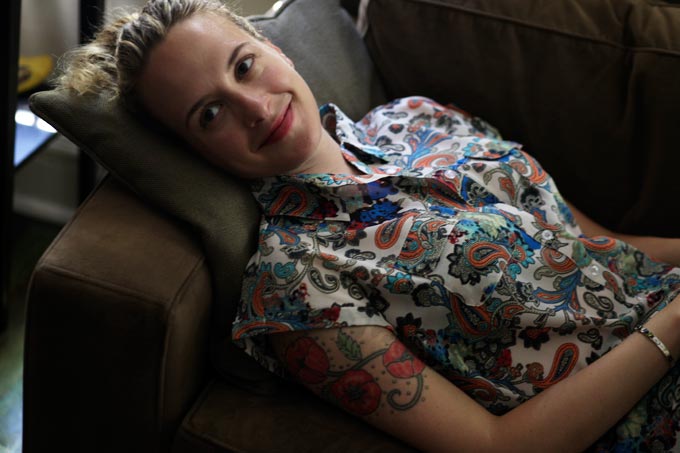Emily Gould, like many emerging writers we feature, began her writing career through blogging. At a time when the NYC media gossip dot com’s were erupting, she was a young editor at Gawker, a position that came with all sorts of tumultuous twists and turns. Fast forward a bit and Emily still works in the digital world: she co-owns Emily Books, a subscription-based independent e-bookstore with her friend Ruth Curry, and she consults publishing-related startups (she’s now at 29th Street Publishing). Emily’s work has also been featured the analog way too, with her book of essays And the Heart Says Whatever (Free Press, 2010) and the forthcoming Friendship (FSG, out July 2014) which is “about best friends who are being pulled in different directions by life but are trying to stay together,” her foray into the realm of literary fiction. Lucky for us, we get a double-whammy in this rendition of the One Question series, with two separate books Emily has found influential. A writer who has always spoken her mind and has done so passionately, we let Emily take it away! —JL
What one piece of writing has changed the way you think about your own work?
Okay sorry but this has to be two books — is that okay? The Cutmouth Lady by Romy Ashby was the first book that I ever read in the Semotext(e) Native Agents Series. It’s a novel but not really—it’s essays—and they’re about an American 14-year-old who’s a quarter Japanese and whose parents, for whatever reason, send her to a girls’ school in Japan in the late ’70s. It’s a lot like Claudine at School, which I didn’t end up reading until a little later. There’s a lot of gorgeous, sensual detail and incidental schoolgirl lesbianism. It’s just this perfect book. It’s really spare, it doesn’t feel worked over at all. It seems like a first draft in good and bad ways, but it has this shocking quality that you never find in really commercial first-person writing by women—this quality of just really not giving a fuck. Really, really, really convincingly not caring whether the narrator, the “I,” gives the impression of being a good person who the reader would want to be pals with. It’s not self-deprecating in any way, and not confessional in any of the senses of that word. It’s a confession that doesn’t ask for forgiveness.
And then that book led me, many years later — I can’t believe how long it took, actually — to a novel by the editor of this series, Chris Kraus. I Love Dick changed my life, in terms of being a writer and in terms of being a human being and living my life as a mostly heterosexual woman. It explained the problem of heterosexuality to me in terms that I had never thought about before. I had been attracted to books by and about gay people or at least people with fluid sexuality for a long time and had not spent much time thinking about why that was. Worlds without straight men appealed to me; I liked the idea that there could be narratives that didn’t operate on the presumption of women’s dependence on men for love, money, and support. I Love Dick was the first work of fiction I’d ever read that acknowledged that women who were attracted to men and wanted to have relationships with them were not going to somehow create relationships that existed outside all existing economic and social structures; that women who love men are going to have to come to terms with their complicity in their own repression and subjugation, and find ways to address it. This is not all the book’s about, of course, but that was my first and most lasting takeaway.![]()
Emily Magazine
@EmilyGould
